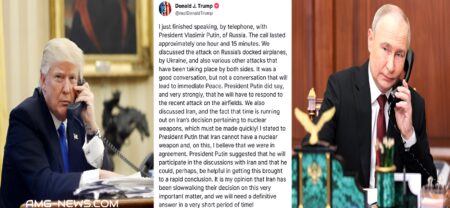All Pacific Northwest Earthquakes Around the Cascadia Subduction Zone From 1979 to Now.
https://www.youtube.com/watch?v=HcXX9RzUA0A
One of the most ‘terrifying’ disasters in the offing is a Cascadia Subduction Zone earthquake in the Pacific Northwest.The 1700 Cascadia earthquake occurred along the Cascadia subduction zone on January 26 with an estimated moment magnitude of 8.7–9.2.
The megathrust earthquake involved the Juan de Fuca Plate that underlies the Pacific Ocean, from mid-Vancouver Island in British Columbia, Canada, south along the Pacific Northwest coast as far as northern California. The length of the fault rupture was about 1,000 kilometers (620 miles) with an average slip of 20 meters (66 ft).
FEMA has prompted the Cascadia Preparedness Team to draw up immediate plans in the event of a worst case disaster scenario along the 620 mile subduction zone that runs from British Columbia to Northern California.
The Weather Network identified in a July report four “terrifying disasters waiting to happen.”One was deadly, exploding lakes in Africa. These are rare events known as limnic eruption and happen when CO2 builds up over time from nearby volcanic activity. Another potentially catastrophic event would be the onset of giant space rocks hitting the Earth.
This would be a global catastrophe, because particles in the atmosphere would block up to 70 percent of sunlight for the first couple of years. Besides that, particles suspended in the stratosphere would warm, stripping the Earth of about 55 percent of its ozone layer.
Two of the potential catastrophes would take place in the U.S., including the eruption of the supervolcano that rests beneath Yellowstone National Park. The report said that if the volcano were to erupt, it would produce enough ash to bury nearby cities and dust those on the coasts. The good news is that the last time this happened was 70,000 years ago and the “repeat” time would be 700,000 years.
The other disaster potentially in the offing is the Cascadia Subduction Zone earthquake. This scenario involves a magnitude 9.0 or worse earthquake in the Pacific Northwest that would be felt all the way down to Northern California. The Pacific Coast would have perhaps an hour of warning before the tsunami hit. As a reference point to how bad this earthquake will be, the recent earthquake in Japan that registered magnitude 6.2 lasted 20 seconds. The Cascadia quake would shake the earth for three to six minutes.
https://www.youtube.com/watch?v=Im2kpgjTJiw
The devastation would be great: If it happened tomorrow, there would be perhaps more than 10,000 deaths and 30,000 injuries. Whole cultures of people could be wiped out and the recovery would take decades. The good news? There’s probably ample time to prepare, and that preparation has begun. A similar quake is thought to have occurred in or before January 1700.
Scientists estimate that a recurrence would be due in about 500 to 600 years. But they don’t know for sure. They also don’t know how much seismic slip occurred during that quake in 1700. Did the subduction zone save anything?
“Faults tend to be pretty good at this. They don’t always spend everything they have,” said Brian Atwater of the U.S. Geological Survey Earthquake Hazards Program. There may have been a lot of “breakage” during the last quake or there could be parts of the fault that didn’t break. That would be a way to get “better than 500 years’ worth of slip in 300 years,” Atwater said. Or maybe the earlier quake spent the “whole bank account” and the future event won’t amount to much.
“That’s part of the challenge of trying to present to a public audience scenarios for future earthquakes and their unknowns,” said Atwater. “They don’t happen like clockwork.”
Rebekah Paci-Green is the director of the Resilience Institute and a professor at Western Washington University. She helped put together Cascadia Rising, a 182-page document that goes into alarming detail about the impending Cascadia earthquake and tsunami.
The document takes you through the scenario of The Quake. The daytime quake will sneak up on the region’s population, feeling somewhat like a semi-truck passing by. As the shaking continues, some will forget their initial training. Some may run, but will make it only a few steps before falling. After about a minute, the shaking will begin to toss people about. Things not anchored will fall. Some people will have gotten under chairs, tables or something they think will protect them. Many will not.
The document says that coastal areas will likely feel it the worst. But down in Oregon and even Northern California, residents will know something is afoot.
Also Read: REVEALED:US PREPARES FOR BIG ONE MAG 9.0 EARTHQUAKE THAT WILL HIT FIVE TIMES SPEED OF SOUND
The Damage
Besides the dead and injured, the damage to infrastructure would be enormous. One of the big threats during such a quake is liquefaction. Many critical structures stand on silt and sand that become unstable. The grainy soil will begin to act like liquid, and structures — such as bridges, ports, airports and industrial facilities — may shift position or sink.
Local residents will have 20 to 30 minutes to get to high ground and away from the effects of the inevitable tsunami, which will consist of multiple waves over several hours. Some areas will remain flooded even as the tsunami retreats.
There are complete cultures in Washington that could be completely wiped out. “It’s a catastrophic event that will affect a wide swath of our state and Oregon, British Columbia and Northern California,” said Paci-Green. “It is absolutely catastrophic for outer-coast communities, and beyond catastrophic for some of the tribes where a large percentage of their reservation is in the inundation zone.”
https://www.youtube.com/watch?v=CLZs9LirF0k
The area will be prone to landslides and falling rock. The effect on transportation would be immense as the shaking and tsunami could damage 16,000 miles of highway and 7,000 highway bridges. The resulting economic losses could exceed $80 billion.
But those are estimates. Paci-Green said things could be worse. “The concern among the engineering community is that we don’t have a lot of data on how infrastructure, especially buildings and bridges, responds over that very long period of shaking,” she said. “We don’t know what we don’t know. The other fear is that these events are so far apart, that it’s much harder to get people’s attention and we’re only recently understanding the significance and the potential for a major Cascadia event.”
The Effort Begins
The immediate impacts will be devastating, but the bigger issue is long-term recovery. That means a consistent and sustained effort to build a more resilient community. “In terms of how to plan for this, it’s long term,” Paci-Green said. “Our best strategies for earthquakes and tsunamis are not response and preparedness, but mitigation, mitigation, mitigation. The six minutes of shaking are going to be really, really terrible. But it’s the decades of recovery that we actually need to be worried about.”
As Paci-Green said, it’s difficult to develop a plan for something that may not happen for 100 years, but recent attention has sparked interest. “The risk is so overwhelming and so large, but also so infrequent that just the slow movement of mitigation is more likely going to put us in good stead,” she said.
Washington is slowly seismically upgrading its bridges. Oregon is working on seismically upgrading its schools, and outer-coast communities are creating bonds and funding structures to do vertical evacuations or move critical assets out of inundation zones.
Vertical evacuation is used when there’s no way to walk or drive out of the inundation zone. It consists of creating berms or multistory structures, strategically placed in communities where people can climb up and out of danger.
The Ocosta School District in Washington state is building a gym for vertical evacuation that will hold not only students and staff but also the local community. The Quileute Tribe, which is completely in the inundation zone, has spent the last 10 years fighting with the federal government about treaty boundaries and reservation boundaries, and was recently granted a land swap to be able to exit the inundation zone, according to Paci-Green.
The Native American tribe is swapping with the federal government some of its reservation, which happened to be an access point to one of the state’s most scenic beaches, for about 750 acres of National Forest where its members can get to high ground.
Also Read:*NASA WARNING* | NASA Warns Giant Asteroid May Hit Earth in December 2019
As a whole, tribes struggle to compete with other jurisdictions in the state when it comes to hazard mitigation grants funding and developing mitigation plans. “They’re very small jurisdictions and these kinds of tasks are overwhelming,” said Paci-Green. “At the same time, this is beyond catastrophic for the tribes because they may literally lose everything in their community.”
Paci-Green said the region needs to look at “innovative resilience solutions,” a lot of redundancy and also smaller-scale solutions such as developing local food production. “We may struggle to get food in across the mountains and up Interstate 5, and so more localized meeting of basic needs like food and water [is important].”
The trouble is that scenario is not similar to the San Andreas Fault in California, where there’s a long history and considerable knowledge. “This is literally a new concept,” she said, “and our codes and planning and all that have not considered it for the vast majority of development in our communities, so we have a whole lot of small towns in the inundation zones.” So When Will It Happen?
So When Will It Happen?
Paci-Green said things are moving slowly and that’s OK. It’s best not to engineer a response based on fear.
Plus, there’s time — but how much?
“The fault doesn’t have a good memory in terms of when the last event happened,” Atwater said. “So when the next one happens is independent of how much time has elapsed since the previous one.”
The previous quake occurred in the Lewis and Clark era. But Atwater looks at it this way: His granddaughter, who is 2, has about a one in 10 chance of experiencing the next one if she stays in Seattle for the next 50 years. But it could be 200 years.
Also Read:A Mega-Tsunami Is Coming-Geologists Theorize That a Volcano on La Palma Might Fall Into The Ocean And Send a Mega-Tsunami Across the Atlantic
Most of the knowledge about the Cascadia Zone has been garnered relatively recently. “When I first showed up here in 1985, it was really a hot question among scientists as to whether this fault produces any earthquakes at all,” said Atwater. “And it’s only been during the past 30 years that a series of discoveries have been made that convinced earth scientists that it does pose a threat.”
The fact that the last one happened some 300 years ago makes it difficult for people to understand the potential. “The earthquakes that have happened in the last decades haven’t approached the kind of thing that the big faults are capable of doing,” said Atwater. “People don’t get the full sense of what nature can do. But that’s part of the detective story.”
https://www.youtube.com/watch?v=-Urn2tPIHwc




![JUST IN: JFK, TRUMP, ELON, SPACE FORCE, WEAPONIZED WEATHER, BITCOIN, PEPE, “COVFEFE”, Q, AND JESUS — MILITARY OPERATIONS, DIVINE TIMING, DIGITAL WARFARE: IT’S ALL CONNECTED AND IT’S HAPPENING NOW! [WATCH]](https://amg-news.com/wp-content/uploads/2024/12/JFK-TRUMP-ELON-SPACE-FORCE-WEAPONIZED-WEATHER-BITCOIN-PEPE-COVFEFE-Q-JESUS-450x318.png)





